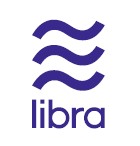- Telecommunications Giant Vodafone Leaves the Libra Association
- Group of Central Banks Assesses Developing Central Bank Digital Currencies
- South Korea Might Impose 20 Percent Tax on Cryptocurrency Profits
- Report: Terrorists Increasingly Use Crypto to Raise Funds Anonymously
- Canadian Securities Administrators Subject Crypto Exchanges to Securities Laws
Featured: A Dive into the Whitepaper of Facebook’s Cryptocurrency Libra
Just recently, Facebook released the whitepaper of its new cryptocurrency Libra. The whitepaper is long but not as long as many other blockchain projects. We read the document line by line to find out what Facebook and the Libra Association (the non-profit behind the Libra cryptocurrency) are planning for the world. In June, the Libra stablecoin has made its way to mainstream media; the sole reason for this is that it has the well-known company Facebook as its creator.
The Libra Association starts off its whitepaper with a bold objective. They describe in one sentence that it is their mission to create a global currency. As of today, many around the world would argue that the dollar is currently the “global” currency. The dollar is used for international trade with oil, gold, agriculture products, and many others that note prices almost exclusively in dollars. Libra is looking to provide the world with its first currency that isn’t meant to empower governments, but instead powers billions of people. At least, that’s what their mission statement says.
Libra’s mission statement at the beginning of the whitepaper:
“Libra’s mission is to enable a simple global currency and financial infrastructure that empowers billions of people.”
As many whitepapers, this one starts with outlining the problem that this crypto project aims to correct. The outlined problem seems to have been taken right out of the book from many other cryptocurrency projects looking to bring digital payments to the mainstream. It speaks about how information and knowledge are readily available to all, and that a huge percentage of the world has access to an affordable smartphone.
Enabling Crypto Payments to the Unbanked
This crypto project, as stated in the paper, will have the solution of bringing digital payments to those that do not have access to banks. The problem Libra is looking to address is not so different from other payment solutions of various crypto projects. The biggest and most meaningful difference is that the Libra coin has the Facebook platform in place to put them years over any potential competition.
It is then noted that blockchain is the perfect solution to solve each problem as noted above. From the secure cryptography to the distributed governance by no single controller of nodes, to the open access giving anyone the ability to participate in the blockchain. These are all great fundamentals. It is why most people believe blockchain is such a strong technology. Though we shouldn’t be so sure that Libra is going to utilize all of these benefits the same way, let’s say - Bitcoin does. At this point in the paper, it is simply being noted what the benefits of blockchain are. It is not outlining the benefits of Libra specifically.
The problem is then outlined by Libra with the current crypto/blockchain projects. The main issue that other projects face is that the coins/blockchain/tokens that are currently developed are not penetrating the mainstream. That they aren’t becoming well known due to issues of volatility and a lack of scalability. Though it should be noted that Facebook has spent 15 years growing its platform, whereas Bitcoin has only had 10, and other altcoins - much much less.

Facebook undoubtedly has a great marketing team. The Libra logo is simple yet memorable. It is a perfect symbol to lay next to a VS, MC, and AMEX logos. This will let consumers know that they can also pay using Libra quickly and efficiently from their smartphones.
The Libra Cryptocurrency: an Open-Source Stablecoin
Next Libra coin is introduced. The Libra coin is explained simply as an effortless way to send money to family and friends around the world. It is compared to be as easy as sending a text or a picture message to one of your contacts.
The Libra coin is backed by a reserve of different assets. The value of one coin will be stable (around 1 US dollar). Though, the coin is not pegged specifically to a US dollar, as it is also backed by US bonds and possibly other strong world currencies. That makes Libra a stablecoin.
A lot of the aspects could be considered a positive or a negative, depending on your beliefs or if you are an individual consumer, a business, or a competing bank. One thing that is positive for all is that the project will be completely open source. This way those who can read code can check into the blockchain as much as they would like, and help others understand how Libra is working. A company such as Facebook could have gone the other way and decided to make their code private as well.
The Libra Association is an independent and non-profit organization. Though, created by Facebook. It is easy to see why Facebook would want to develop this project under a sub-organization. They are proposing such a bold and controversial banking-blockchain system into the mainstream view.
Libra’s Contributing Members Need to Invest at least $10 Million
There is a consortium of businesses from different sectors joining together to run nodes for the project. The whitepaper doesn’t state which but some reports have indicated that each node comes at a price of 10 million USD. The industries from which members join include payments, telecom, blockchain, venture capital, non-profits, and technology. Some of the most well-known companies and organizations are MasterCard, Visa, PayPal, Stripe, Lyft, eBay, FB, Spotify, and the all too familiar Coinbase.
Libra has a goal of obtaining 100 members by 2020. At a price of 10 million each, that would be 1 billion dollars raised by the venture.
The chain will be permissioned. This means that not just anyone with the right hardware can jump in and be a validator for the network. It must be someone who has been invited in, such as a major company. The paper states that the project will start this way, hinting that in the future it may be open and permissionless - but this isn’t stated as fact. It states that within 5 years they will research and implement a transition, but gives little hope that this will be the case. A question can be raised, if it costs 10 million to run a node at this time, how much could it possibly cost to run a node in 5 - 10 years?
New Programming Language, Similar to Ripple’s Blockchain, Pseudonymous
One of the most interesting aspects of the project (and there are many), is that Facebook created a new programming language that the crypto coin will use. The language is titled “Move” and it will allow developers to create smart contracts and other applications on top of the blockchain.
The blockchain created by Libra stays away from “proof of work” like Bitcoin and utilizes a more efficient consensus protocol. This blockchain is a lot more similar to Ripple (XRP)trade than it is to Bitcoin in the way it proves blocks.
A surprising statement in the whitepaper (laid out in bold font to serve a point) is that the blockchain will be “pseudonymous”. It will allow wallet users to hold one or more addresses that are not linked to their real-world identity. Though, if this project were to continue in the United States, it is popular opinion that the US would enforce some sort of know-your-client (KYC) validation for participants. They could also force users to link wallets to approved Facebook accounts.
The whitepaper that was put forth was written in a very easy to understand and straightforward fashion. There are several mentions throughout the whitepaper for a technical paper. It was a smart move for Libra to put this out in an easy to understand way.
Cryptocurrency Under Regulatory Fire
The Libra cryptocurrency is already under fire within the first day of release by many world governments such as Russia, Australia and India, as well as several Western European states. Some countries are stating they will not allow the use of Libra cryptocurrency in their country. Then, we have other countries (such as the US) wanting to speak to Facebook about this effort. Congress will hold a meeting with Libra on July 16th of this year.
An incentive program is briefly mentioned. Many blockchain projects have done this in attempts that their digital coin will be utilized and familiarized with a larger user base. Coinbase has a learning platform in which they give virtual coins to customers for learning about different projects that their platform sells.
There is then a small two-sentence paragraph in the whitepaper that seems out of place. It states that an additional goal is to develop an open identity standard, and incorporating a decentralized and portable digital identity. It is vague and hard to tell if they are talking about. If they are referring to the identity of their organization, or if they are literally wanting each user to have a portable and digital version of their identity. This may sound a little futuristic, but it wouldn’t be that far off. There have been a lot of other blockchain companies in the past that have been attempting to create identity blockchains in attempts to prevent identity theft.
All in all, this project may be just what the current cryptocurrency space needs to drive it deeper into the mainstream. That being said, If you don’t trust Facebook at the current moment, you probably wouldn’t want to utilize this crypto project. It is hard to determine if this project is purely good intentions. Maybe it is, or maybe it is just another attempt to sell personal information for more billions of dollars.
We can all but only hope that this will be a great cryptocurrency innovation that will change the world and bring beneficial financial systems that will help to lower the high rate of poverty around the world.
Digital favorites
- Siti Di Scommesse
- Casino Bonus Senza Deposito Immediato
- Best Casinos Not On Gamstop
- Casinos Not On Gamstop
- UK Casinos Not On Gamstop
- Non Gamstop Casinos
- UK Casinos Not On Gamstop
- Casino Not On Gamstop
- Non Gamstop Casino
- Slots Not On Gamstop
- Gambling Sites Not On Gamstop
- オンライン カジノ おすすめ
- Gambling Sites Not On Gamstop
- Non Gamstop UK Casinos
- UK Casino Sites Not On Gamstop
- UK Casinos Not On Gamstop
- Non Gamstop Casinos UK
- Non Gamstop Casino Sites UK
- Best Slot Sites
- UK Online Casinos Not On Gamstop
- Best Non Gamstop Casino
- Best Sports Betting Sites Not On Gamstop
- Meilleur Casino En Ligne
- Migliori Casino Online
- Meilleur Site De Casino En Ligne
- Siti Casino





